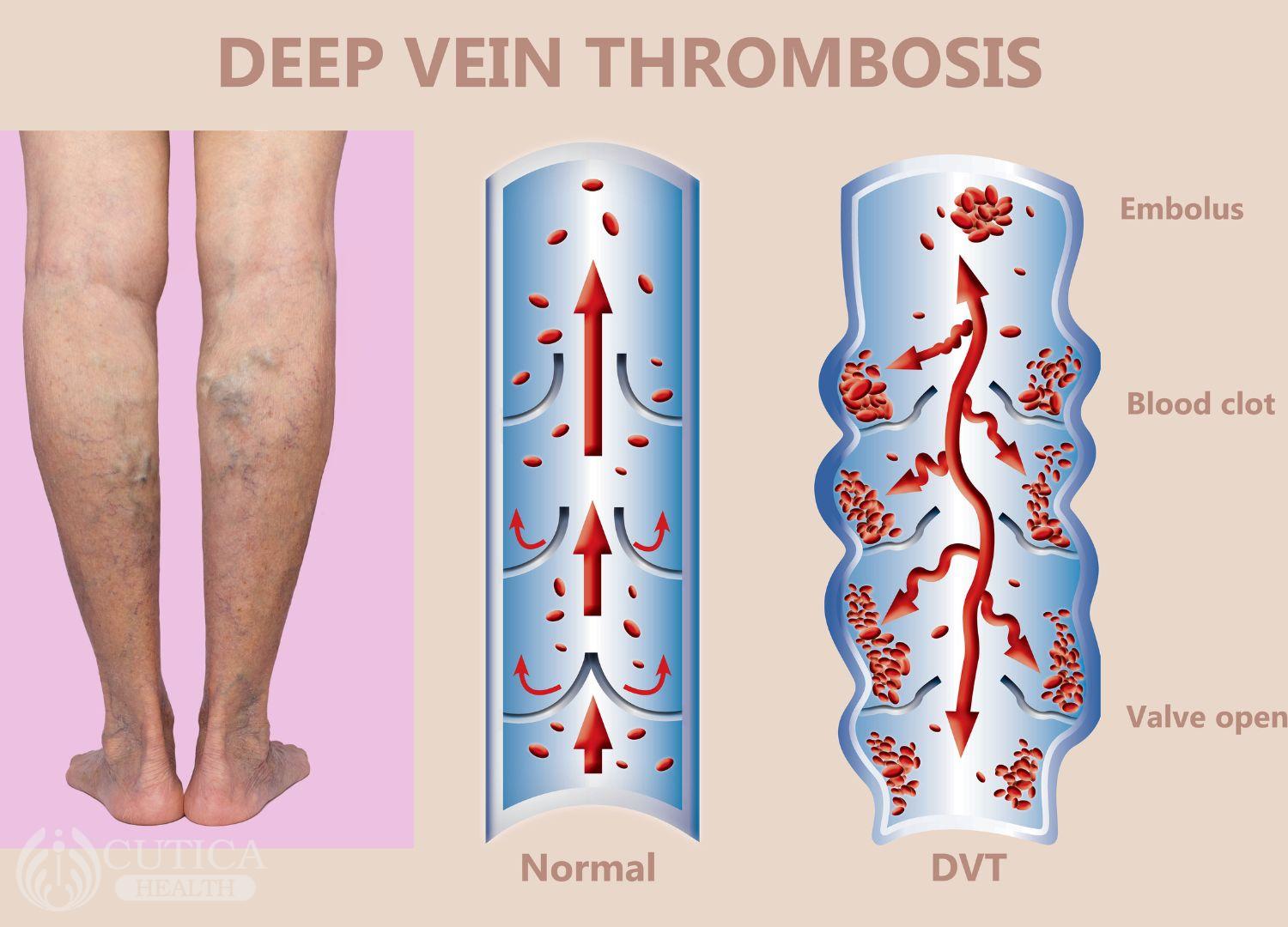Jessica noticed her left leg was swollen after waking up this morning. When she touched it, she discovered it was tender. She had just arrived home last night after a long journey by road from Abuja to Akwa Ibom. She came to attend the wedding ceremony of a friend. She reasoned that the leg swelling was due to prolonged sitting on the road trip and joined the wedding celebrations.
A few hours later, she noticed she could not breathe properly. She thought it might have been the stress of the journey and the wedding preparations. But her breathing only got more difficult, and she had to be taken to the hospital, where diagnoses of DVT and PE were made.
What is DVT?
Deep Vein Thrombosis (DVT) is a serious medical condition caused by the formation of blood clots in deep veins. It is most common in the calf.
How and why does DVT occur?
DVT is typically caused by prolonged pooling or stagnation of blood in the veins.

Prolonged periods of immobility, such as during long-haul flights or bed confinemend during a illness or after surgery, increases the risks of DVT. Other contributing factors including smoking, obesity, pregnancy, hormonal contraceptives, inherited clotting disorders, and certain medical conditions.
What are the dangers of a DVT?
Although DVT may present with mild symptoms, such as pain, swelling, and warmth in the calf, it can lead to life-threatening complications. One of the major dangers associated with DVT is pulmonary embolism, commonly called PE. PE occurs when the blood clot in a DVT breaks loose and travels to the lungs, blocking the blood supply to parts of the lung, and leading to severe difficulty breathing, chest pain, or even death. Prompt medical intervention is crucial.
Additionally, DVT can cause long-term complications. Chronic venous insufficiency, a condition where the damaged veins struggle to efficiently return blood to the heart, can result from DVT. This can cause swelling, pain, skin discoloration, and ulcers in the affected limb. Post-thrombotic syndrome, characterized by persistent pain, swelling, and skin changes, is another common complication. These complications can reduce an individual's quality of life, highlighting the importance of early detection and treatment.
What do I do if I suspect I have a DVT?
Prompt recognition of the symptoms and risk factors of DVT is essential for timely intervention. Seek medical attention immediately if you have persistent calf pain, tenderness, swelling, or redness, especially if accompanied by shortness of breath, chest pain, or coughing up blood.
Medical professionals employ various diagnostic methods to confirm the presence of DVT, such as ultrasound, venography, and blood tests. Early treatment primarily focuses on preventing the clot from growing and reducing the risk of complications. Anticoagulant medications, commonly known as blood thinners, are frequently prescribed to prevent further clotting.
Preventive measures play a vital role in averting DVT
Regular physical activity promotes healthy blood circulation. Maintaining a healthy weight, avoiding smoking, and staying hydrated are additional lifestyle measures that can minimize the risk of DVT. If you are on a long-distance flight or road trip, take short breaks to stretch out and walk around every 2-3 hours.

Doctors recommend a promptreturn to physical activity after bed confinement due to surgery. Mechanical devices and medications are used to prevent DVT in hospitalized patients, who have an increased risk of DVT.
Conclusion
DVT is a dangerous condition that can cause a painful calf and lead to severe complications. Recognizing the symptoms, understanding the risk factors, and seeking medical attention promptly are crucial steps in managing DVT effectively. Calf pain and swelling should prompt you to seek medical attention.

